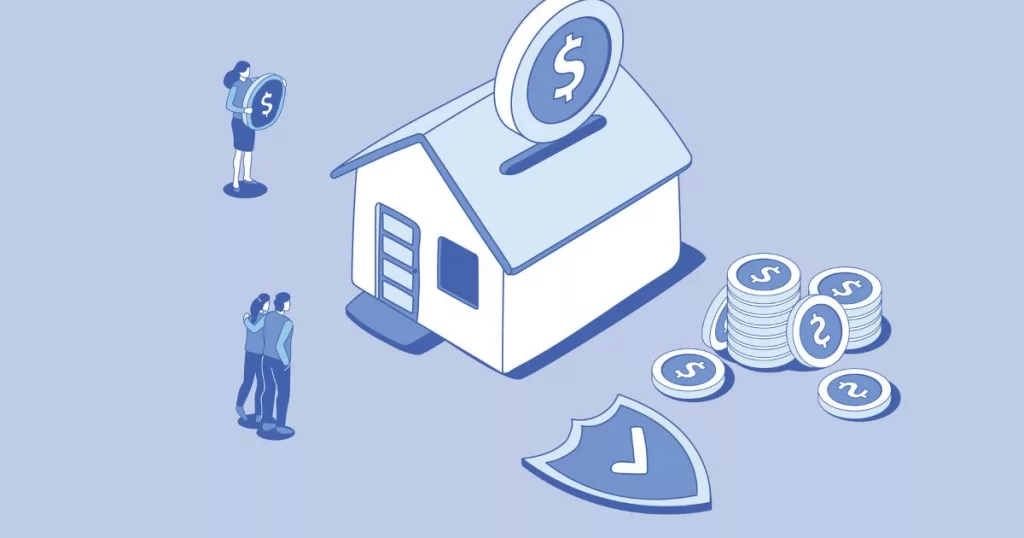Home Loan Disbursement Stages Explained

Buying a home is considered a milestone by many people. However, homes, and property in general, do not come cheap. That’s where a home loan comes in. With one, people can purchase or even construct their dream homes.
However, acquiring a home loan can be a lengthy (and sometimes confusing) process, though things are definitely made easier by the internet. One has to apply for the loan, submit the required documents, wait for them and the property they are trying to buy to be verified, have their application approved, and the money disbursed to them.
In this blog post, we are going to explain the process of home loan disbursement to you in detail, along with some tips to manage the disbursement process, so that you are aware as a home loan agent.
What Is a Home Loan Disbursement?
Home loan disbursement is basically the process of having the approved loan amount transferred into the borrower’s account by the lender. It involves three basic stages: form filling, document sanctioning, and disbursement.
As a home loan agent, you can use an online home loan eligibility calculator to find out the amount your customer would be eligible for. Moreover, once you know your loan amount, you can also try a home loan EMI calculator to find out how much the monthly EMI will be. If your customer can afford the EMI, they can get a loan.
The Home Loan Disbursement Process
The home loan disbursement process varies from lender to lender, based on their policies that you should know as a home loan agent. However, they all have a few common steps, which are outlined below.
When your customer or you borrow, be sure to read and understand the terms and conditions of the home loan agreement. This includes penalties for non-payment or pre-payment of the loan.
The basic steps of the home loan disbursement process are as follows:
-
The Loan Application: The first step is to fill out the loan application form, which will have personal and financial details, such as income, employment, other existing loans, property, and so on. This step can be carried out either in person or online.
Other documents along with the application form include self-attested copies of identity proof, address proof, age proof, educational qualifications proof, income proof, business proof, and property documents. One may even have to pay a loan application processing fee, which is usually between 0.5% – 2% of the total loan amount, and often non-refundable.
-
The Valuation Of The Property: Once the application with the required documents and the application fee is sent, the lender will do a property valuation to find out the market value of the property. This decides the loan amount one is eligible for. Thus, if the value of the property is less than the offered loan amount, the borrower may only get the reduced amount.
-
The Verification Of Creditworthiness: Along with deciding the loan amount, the lender will also check the borrower’s creditworthiness to ensure that they can repay the loan. This is done by checking the credit score, employment history, and income. Therefore, if one has a low credit score or a history of unsteady income, their loan application may not be approved without additional security.
-
The Approval Of The Loan Application: Once the above two steps are completed to the lender’s satisfaction, the borrower’s home loan application will be approved. If the documentation is correct and complete, the approval will be faster. As a home loan agent, it is essential to collect and verify all the customer’s documents to ensure a smoother loan sanction. After approval, the borrower will receive a loan agreement that they will need to read thoroughly, sign, and then send back to the lender. The loan agreement usually includes the following details:
-
The loan amount sanctioned
-
The interest rate applicable
-
The type of interest rate (fixed, variable, or hybrid)
-
The tenure of repayment
-
The mode of repayment
-
Any special scheme, if applicable
-
The terms, conditions, and policies of the loan
-
The Disbursement Of The Loan: After signing and sending back the loan agreement, the money will be disbursed to the borrower’s account as per the mutually agreed terms. For example, one may get their money based on the progress of construction if they have opted for a construction-linked loan, or they may get the money all at once in the case of a lump-sum disbursement loan.
-
The Loan Repayment: This is the last step of the home loan disbursement process, where the borrower repays the loan based on the previously agreed upon repayment schedule. The repayment is usually in the form of EMIs and typically includes both the principal amount and the interest charged on it.
Tips To Manage Home Loan Disbursement Stages
All the above steps prove that acquiring a home loan is not necessarily easy. It takes some serious planning and attention to detail. The following are a few tips that we at Andromeda Loans have outlined to help you manage the whole home loan disbursement process as a home loan agent:
-
Understand the process: Before applying for a loan as a home loan agent, be aware of the stages of the disbursement process for the lender and the documents that they may require at each stage.
-
Plan ahead: Once you understand the home loan disbursement process, make sure your customers have the finances that are required to repay the loan on time at all stages of construction. Encourage them to set up a budget for all the expenses related to the loan, including the down payment, pre-EMI, application charges, and so on. Additionally, advise them to have a buffer for any contingencies that may occur as well, such as delays in the construction process or other such emergencies.
-
Keep track of the construction process: If your customer is getting a construction-linked home loan, keeping track of the construction will help them monitor the disbursement stages and know if the money is being released on time.
-
Submit the documentation on time: Keeping a list of the documentation that must be submitted at each stage of disbursement helps you submit the documents on time. This, in turn, ensures that the disbursement process is completed on time.
-
Monitor your credit score: A good credit score offers your customers a better interest rate on the loan. Thus, as a home loan agent, it is important to track their credit scores and help them take steps to improve it, if necessary.
-
Keep in contact with the lender: Be sure to communicate with the lender and ask for any clarification you may need as a home loan agent. This helps the disbursement process to go smoother.
Home loan disbursement is essentially the process of having the approved loan amount sent to the borrower. The main stages involved are the application, submission of documents, verification of said documents and the property being purchased or constructed, approval of the loan, and disbursement of the loan. Thus, the disbursement process doesn’t have to be difficult or confusing as long as you understand the steps involved and plan ahead for your customer’s or your application, as a home loan agent.








